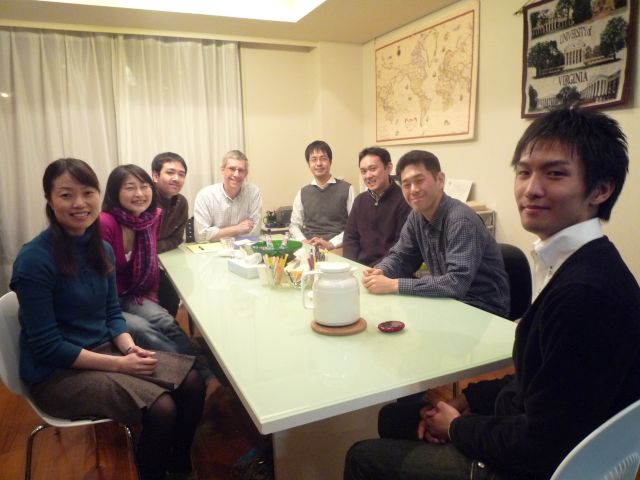
目次
MBA GMAT Critical Reasoning、「ロジカル思考」の世界へようこそ!
GMAT Critical Reasoningを勉強中のMBA留学準備生はもちろん、受験生、ロジカル思考、頭の体操、推理小説愛好家、英語読解に興味がある人、挑戦歓迎!
[お題」GMAT Critical Reasoning GcrC-1 05
Dutch elm disease, which is caused by the fungus C. ulmi spread by adult scolytid beetles, has already destroyed 70 percent of the elms in Greenwood Forest.
Another naturally occurring fungus, P. oblonga, kills larvae of the scolytid beetle.
Forest rangers plan to introduce P. oblonga into Greenwood Forest in order to save the remaining mature elms.
[Question]
Which of the following, if true, would cast the most serious doubt on the plan’s prospects for success?
(A) During the last year, the scolytid beetle population in Greenwood Forest has decreased by 30 percent because of cold weather conditions.
(B) Dutch elm disease cannot be abated by introducing chemical compounds used to arrest the diseases of many other species of tree.
(C) Introduction of P. oblonga saved elm trees in neighboring Gatemar and Lavemont Forests.
(D) For P. ohlonga to control scolytid beetles successfully, it must be established in a forest prior to the beetle infestation.
(E) Greenwood Forest has lost many maple trees because of a fungus infection.
[分析]
「Premise(前提)」
まず、「Premise(前提、厳然たる事実として分かってること)」は:
▽
1)Dutch elm disease, which is caused by the fungus C. ulmi spread by adult scolytid beetles, has already destroyed 70 percent of the elms in Greenwood Forest.
fungus C. ulmi spread by adult scolytid beetles(adult scolytid beetlesによって拡散したfungus C. ulmi、例によって、こんな専門的な細部はど~でもいい、ということは分かるね。まあ、beetleがカブトムシ的なもので、fungusが菌類というくらいは、知ってるといい。ともあれ)
それが, Dutch elm diseaseを引き起こし、elms in Greenwood Forestの70%を破壊した。
2)Another naturally occurring fungus, P. oblonga, kills larvae of the scolytid beetle.
一方、別種の菌類、fungus, P. oblongaは、scolytid beetleのlarvae(幼虫)を殺す。
「Conclusion(結論)」
本文の「Conclusion(結論)」は、
( plan to=~しようとしている、というのが、対策すなわちまとめにかかってる、つまり結論だとわかる)
Forest rangers plan to introduce P. oblonga into Greenwood Forest in order to save the remaining mature elms.
Forest ranger(こんなのどうでもいい)は、P. oblonga(scolytid beetleのlarvae(幼虫)を殺すやつだね)を導入しようと考えている。つまり、P. oblongaで、Dutch elm diseaseの元凶と考えられるscolytid beetleを退治しようとかんがえている。
[Question]
今回の[Question]は、
Which of the following, if true, would cast the most serious doubt on the plan’s prospects for success?
ということだが、これは?
「cast the most serious doubt 」ということはすなわち、疑問を投げかけるということ、つまりこれも、「Weaken」問題。「相手(本文)の主張(通常argumentという)を、(最も強力に)論破する(ケチをつける)選択肢を(A) ~(E)の中から選ぶ」のが課題。
[解題]
ここでは、「Dutch elm diseaseを引き起こしていると考えられるscolytid beetleをlarvae(幼虫)段階で退治することで、Dutch elm diseaseを食い止めよう!」というプランに対して、ケチをつけるのが課題。
つまり、「そんなことやっても駄目だよ」と、最も示唆してる選択肢を選ぶ。
(A) During the last year, the scolytid beetle population in Greenwood Forest has decreased by 30 percent because of cold weather conditions.
これは、scolytid beetle の増減について述べてるだけ。out of scope。
(B) Dutch elm disease cannot be abated by introducing chemical compounds used to arrest the diseases of many other species of tree.
これは、chemical compounds の話。out of scope。
(C) Introduction of P. oblonga saved elm trees in neighboring Gatemar and Lavemont Forests.
これは、P. oblonga作戦がうまくいったよという話。逆にサポートになる。
(E) Greenwood Forest has lost many maple trees because of a fungus infection.
これは、Greenwood Forest に被害の大きさについて述べたもの。悲しいけど、out of scope。
[正解]
(D) For P. ohlonga to control scolytid beetles successfully, it must be established in a forest prior to the beetle infestation.
これは、「P. ohlongaは、scolytid beetles がやってくる前に導入しないと効果ないよ」というもの。つまり、上記プランの漸弱性を指摘。
ちなみにこれは、以下の問いもオマケについてます。挑戦歓迎!
[挑戦問題]
9706 3.
Which of the following, if true about P. oblonga,provides the strongest evidence that the plan will succeed?
(A) It is spread by a variety of birds that nest in trees that are the home of scolytid beetle larvae.
(B) It has been known to lie dormant within a tree for up to ten years before it begins to reproduce.
(C) It spreads more slowly than C.ulmi, under most climatic conditions.
(D) It does not destroy some commonly found subspecies of scolytid beetles.
(E) It has been known to kill maple trees by destroying their root systems.

